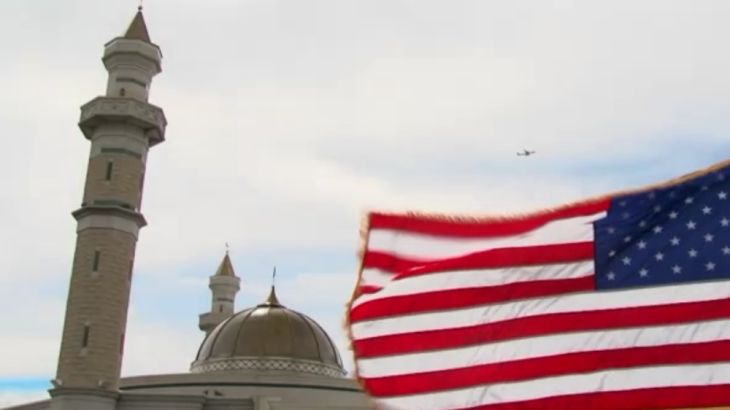
Islam in America
A decade ago, we travelled across the US to explore the roots and influence of Islam in pre-Trump America.
Ten years ago, Rageh Omaar embarked on a unique journey across the United States to reveal the truly surprising, counter-intuitive, and little-known world of Islam in America.
From the major conurbations of New York City and Chicago, to the small town hinterlands of Texas and the west, Al Jazeera pulled together the history of Islam in the US and painted a vivid portrait of a vibrant, diverse and growing group of followers of Islam that is unlike any Muslim community in the world.
Keep reading
list of 4 itemsPhotos: Ukraine marks its third Easter at war
Israeli police detain Greek consul’s guard at Orthodox Easter ceremony
Gunman kills at least six in attack on mosque in Afghanistan’s Herat
Since then, much has changed globally, with the rise of ISIL, and in the US, with the election of Donald Trump as the 45th president of “the free world”. Among the numerous controversial decisions that have come to pass under the Trump administration is what has come to be known as the Muslim travel ban – a law temporarily barring entry to the US for travellers from six different Muslim-majority countries.
REWIND spoke with Rula Jebreal, professor of international relations at the University of Miami, about the shape of Islam in America 10 years since the film was first aired, and how things have changed for Muslims living in the US.
“A lot of things have changed. There has been a major shift in Islamophobia and attacks against Muslims, especially in 2015 and 2016. It is not a coincidence that the FBI report about Islamophobic hate crimes skyrocketed in those years, far more than in 2001 after 9/11,” Jebreal says.
“Immediately after the election, President Trump [travel] banned six Muslim countries … it looked like the religious persecution of one group based on the actions of individuals in Pakistan or Afghanistan … he then went on to attack [London’s] first Muslim mayor, Sadiq Khan, immediately in the aftermath of a terror attack in London, singling him out because he’s Muslim and he’s brown, because he has the platform.
“We are a minority [in the US]. We are under-represented in the political arena and in the media. When you go to the Holocaust museum, it is clear and written in the walls: the Holocaust did not start with a killing. It started with violent words, it started with politicians dividing people with “them versus us”. It started with demonising an entire group of people and criminalising them. That paved the way to the killing and the gas chambers.”
Jebreal believes that “America today is fighting a monster: white supremacy, the pure race. In the name of the pure race, every minority is the enemy.”
Editor’s note: This interview has been edited for brevity and clarity.